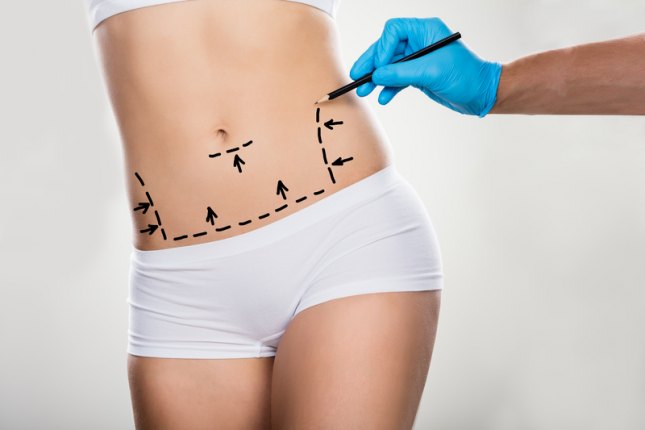The recovery time after liposuction surgery in Riyadh, like any surgical procedure, varies significantly from person to person. It depends on factors such as the extent of the surgery (how much fat was removed and from how many areas), the specific liposuction technique used, your individual healing ability, and your adherence to post-operative instructions.

Here's a general breakdown of what to expect during your liposuction recovery in Riyadh:
Immediate Post-Operative Period (Day 1-3)
- Pain and Discomfort: You will experience soreness, bruising, and swelling in the treated areas. This is normal, and your surgeon will prescribe pain medication to manage discomfort.
- Compression Garment: You will be fitted with a compression garment immediately after surgery. This is essential for reducing swelling, promoting skin contraction, and helping your body adapt to its new contours. You'll need to wear it almost continuously, only removing it for showering (if permitted by your surgeon).
- Drainage: Small incisions may drain fluid (tumescent solution and some blood) for the first 24-48 hours. This is normal and helps reduce swelling.
- Rest: Prioritize rest. While light walking is encouraged to promote circulation and prevent blood clots, strenuous activity should be avoided.
- Assistance: You'll need someone to drive you home and assist you with daily tasks for at least the first 24-48 hours.
First Week (Days 4-7)
- Improving Discomfort: Pain and soreness should gradually subside, and you may be able to switch to over-the-counter pain relievers.
- Swelling and Bruising: Swelling and bruising will likely be at their peak during this time but will gradually begin to fade. The color of bruising may change from deep purple to greenish-yellow.
- Follow-up: You'll typically have your first follow-up appointment with your surgeon in Riyadh. Dressings may be changed, and incision care instructions will be reviewed.
- Return to Light Activities/Work: Many patients can return to light, non-strenuous work (e.g., desk job) within 3-7 days, depending on their comfort level and the nature of their job. Avoid heavy lifting.
- Showering/Bathing: You'll receive specific instructions on when you can shower. Full immersion in baths or swimming pools is typically avoided for at least 3 weeks.
- Compression Garment: Continue wearing your compression garment diligently.
Weeks 2-4
- Significant Swelling Reduction: A noticeable reduction in swelling will occur, allowing you to see more of your new body contours.
- Bruising Fades: Most bruising should have resolved by now.
- Numbness: Some temporary numbness or tingling in the treated areas is common. This usually resolves over time.
- Increased Activity: You can gradually increase your activity level, but strenuous exercise, heavy lifting, and intense physical activity should still be avoided until cleared by your surgeon.
- Compression Garment: Continue wearing the compression garment as instructed, often for at least 3-4 weeks full-time, and then potentially part-time for longer.
Weeks 4-6
- Further Swelling Reduction: The majority of the swelling should have subsided, providing a clearer view of your results. Some minor residual swelling, especially in larger treated areas, may still be present.
- Resuming Exercise: Most patients are cleared to gradually resume their full exercise routines, including more strenuous activities, around the 4-6 week mark, with your surgeon's approval.
- Compression Garment: Your surgeon will advise you when you can discontinue wearing your compression garment. This typically happens around 4-6 weeks for most areas, but it might be longer for extensive cases.
Months 3-6 and Beyond (Final Results)
- Full Swelling Resolution: Any remaining subtle swelling will completely resolve. This can take anywhere from 3 to 6 months, and in some cases, up to a year, especially after extensive liposuction.
- Skin Contraction: Your skin will continue to contract and settle over the new contours. This process is crucial for the final aesthetic outcome, and its effectiveness depends on your skin's elasticity.
- Final Appearance: The true, permanent results of your liposuction will become fully apparent once all swelling has dissipated and the skin has completely adapted.
- Maintaining Results: The fat cells removed during liposuction are gone permanently. However, it's vital to maintain a stable weight through a healthy diet and regular exercise. If you gain significant weight, the remaining fat cells in untreated areas can still expand, potentially diminishing your results.
Factors That Can Influence Recovery Time:
- Extent of Surgery: Removing fat from multiple areas or large volumes of fat will generally lead to a longer recovery.
- Liposuction Technique: Newer techniques like VASER or Body Jet liposuction often boast slightly faster recovery times due to less tissue trauma compared to traditional methods.
- Individual Healing: Your age, overall health, nutritional status, and lifestyle habits (e.g., smoking, which can impair healing) all play a role in how quickly and efficiently your body recovers.
- Adherence to Post-Op Instructions: Following your surgeon's specific advice on compression garment use, activity restrictions, and wound care is crucial for minimizing complications and optimizing your recovery.
Choosing a reputable liposuction clinic in Riyadh with an experienced, board-certified surgeon is the best way to ensure you receive comprehensive post-operative care instructions and achieve the best possible results.




Comments